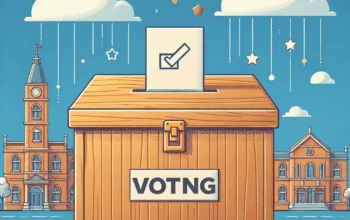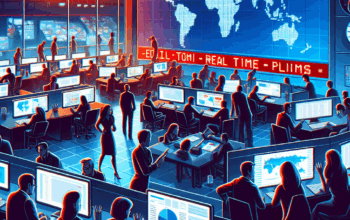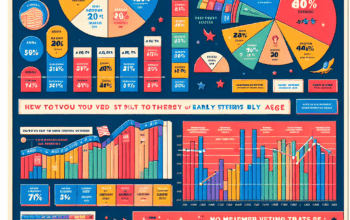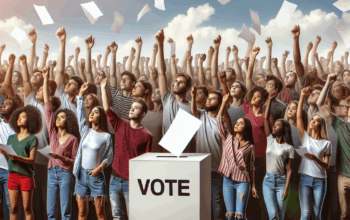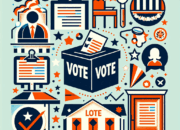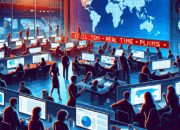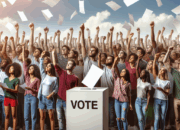Voter suppression is a pressing issue that blurs the lines of democracy, impeding the fundamental rights of citizens to participate in the electoral process. As we move into 2025, challenges surrounding voter suppression continue to evolve, posing significant obstacles for voters nationwide. While various forms of voter suppression have surfaced in the past, the landscape is ever-changing, demanding constant vigilance and advocacy. This article aims to delve deeply into the ongoing challenges in the electoral process, providing detailed insights, implications, and solutions.
Understanding Voter Suppression: Historical Context
To grasp the current landscape of voter suppression, one must understand its historical context. Voter suppression has deep roots in American history, tracing back to the post-Civil War era when laws were enacted aimed at disenfranchising African American voters. Devices such as literacy tests, poll taxes, and other discriminatory practices were implemented to maintain the political supremacy of white voters. Over the decades, landmark legislation such as the Voting Rights Act of 1965 sought to dismantle these barriers. However, the Supreme Court’s 2013 decision in Shelby County v. Holder weakened key provisions of this act, leading to a resurgence of voter suppression tactics.
In the 2020 elections, concerns regarding voter suppression surged, particularly amidst the COVID-19 pandemic. Many states introduced new legislation that critics argue disproportionately affected marginalized communities. For instance, stricter voter ID laws, reduced access to early voting, and the closing of polling places were implemented under the guise of “election security.” These restrictions sparked widespread protests and debates on the legitimacy of such measures, marking the beginning of a renewed focus on protecting voting rights in 2021 and beyond.
The Current Landscape of Voter Suppression in 2025
Fast-forwarding to 2025, the landscape of voter suppression has not only persisted but has also evolved significantly. Many states have continued to pass laws that critics claim negatively affect voter turnout, particularly among minority groups, students, and low-income families. An example of this is the increase in the number of states implementing strict voter ID laws. While proponents argue that these measures ensure the integrity of elections, opponents contend that they create barriers for eligible voters who might lack the required identification, leading to disenfranchisement.
Additionally, the rise of misinformation campaigns surrounding voter eligibility and registration processes has emerged as a modern form of voter suppression. Social media platforms, while beneficial for mobilizing voters, have also been used to spread false narratives about voting requirements. This confusion deters individuals from participating in elections, undermining the democratic process. As 2025 unfolds, it is evident that combating misinformation is crucial to ensuring that all eligible voters can exercise their rights without fear or confusion.
Legislation and Legal Battles: Struggles for Equity
Efforts to combat voter suppression have led to a series of legislative initiatives and legal battles across the nation. Many advocacy groups are working tirelessly to advocate for voting rights, pushing for reforms such as automatic voter registration and the restoration of voting rights for felons. Legislative measures introduced in various states aim to simplify the registration process, expand access to mail-in voting, and limit the ability to purge voter rolls unjustly. These initiatives reflect the growing awareness and urgency to protect voting rights in the face of oppressive measures.
However, these affirmative actions have not come without backlash. Numerous states have enacted laws that critics argue intentionally suppress votes, such as limiting drop boxes and reducing voting hours. Court cases challenging these laws have become commonplace, resulting in a patchwork of legal precedents that can vary significantly from state to state. For instance, the outcomes of legal challenges in pivotal states like Georgia, Texas, and Arizona will likely have far-reaching implications for future elections, influencing how voters can exercise their rights across the nation.
The Impact of Technology: A Double-Edged Sword
As we navigate through 2025, technology’s role in the electoral process has become increasingly significant, presenting both opportunities and challenges for addressing voter suppression. On one hand, advancements in technology have facilitated greater access to information related to voting. Online voter registration and the availability of election information through official websites help enhance voter knowledge and participation rates. Technological innovation also allows greater efficiency in the voting process through the use of electronic voting machines and secure online platforms.
Conversely, technology can also pave the way for new forms of voter suppression. Cybersecurity threats and the potential for hacking create risks that could undermine the integrity of elections. In addition, the proliferation of misinformation on social media can discourage voter turnout and fuel confusion about the voting process. As election officials and technologists work to mitigate these threats, it is essential to balance technological advancement with secure practices that protect voters’ rights and ensure free and fair elections.
Grassroots Movements and Advocacy: Rise of Activism
In response to growing concerns about voter suppression, grassroots movements and advocacy organizations have emerged as pivotal players in the fight for electoral equity. Mobilizing communities to engage in civic activities, these groups work toward raising awareness of voter rights and the importance of participation in elections. Organizations such as the NAACP and the League of Women Voters have ramped up their efforts, launching campaigns aimed at educating voters about their rights and methods for registering.
Moreover, these movements often focus on coalition-building between various demographics affected by voter suppression, including people of color, young voters, and low-income individuals. The collective voice of these groups has pushed for changes on both the legislative and local levels, resulting in expanded access to voting resources, especially in historically marginalized communities. The power of activism is evident as communities rally together to demand transparency, accountability, and equal representation in the electoral process.
Conclusion
As we reflect on voter suppression in 2025, it is clear that challenges remain pervasive in the electoral process. Historical precedents serve as reminders of the struggle for voting rights, while current legislative battles and technological advancements highlight the complexity of the issue. Amidst these hurdles, grassroots movements and advocacy efforts emerge as beacons of hope, driving awareness and action to combat voter suppression. Now, more than ever, it is imperative for citizens to remain engaged, advocating for their right to vote and ensuring that future elections are accessible and fair for all.
FAQs About Voter Suppression and Electoral Challenges
What is voter suppression?
Voter suppression refers to strategies, tactics, and laws that reduce or hinder certain groups’ ability to vote, often targeting marginalized communities. This can include manipulative practices like stringent ID laws, misinformation campaigns, and the closure of polling places.
How does voter suppression impact elections?
Voter suppression skews electoral outcomes by disproportionately affecting certain demographic groups, leading to underrepresentation and potentially favoring one political party over another. This undermines the democratic process, hindering fair competition in elections.
What can be done to combat voter suppression?
Combatting voter suppression requires collective efforts, including advocating for more accessible voting laws, educating voters about their rights, and participating in grassroots movements aimed at raising awareness and mobilizing communities.
Are there recent examples of voter suppression initiatives in the U.S.?
Yes, recent examples include strict voter ID laws implemented in several states, legislative restrictions on mail-in voting, and the reduction of polling places in minority communities, all of which have sparked widespread criticism and legal challenges.
How can voters defend themselves against voter suppression?
Voters can educate themselves about their rights, stay informed about local voting laws, and participate in advocacy efforts. Engaging with community organizations that promote voting access can also empower individuals to effectively navigate the electoral process.
By exploring the nuances of voter suppression as it relates to the electoral process in 2025, this article aims to inform and inspire action toward a more just and equitable democracy.

